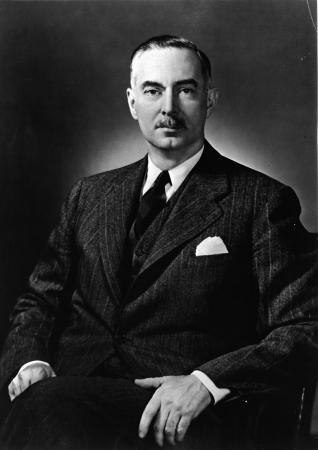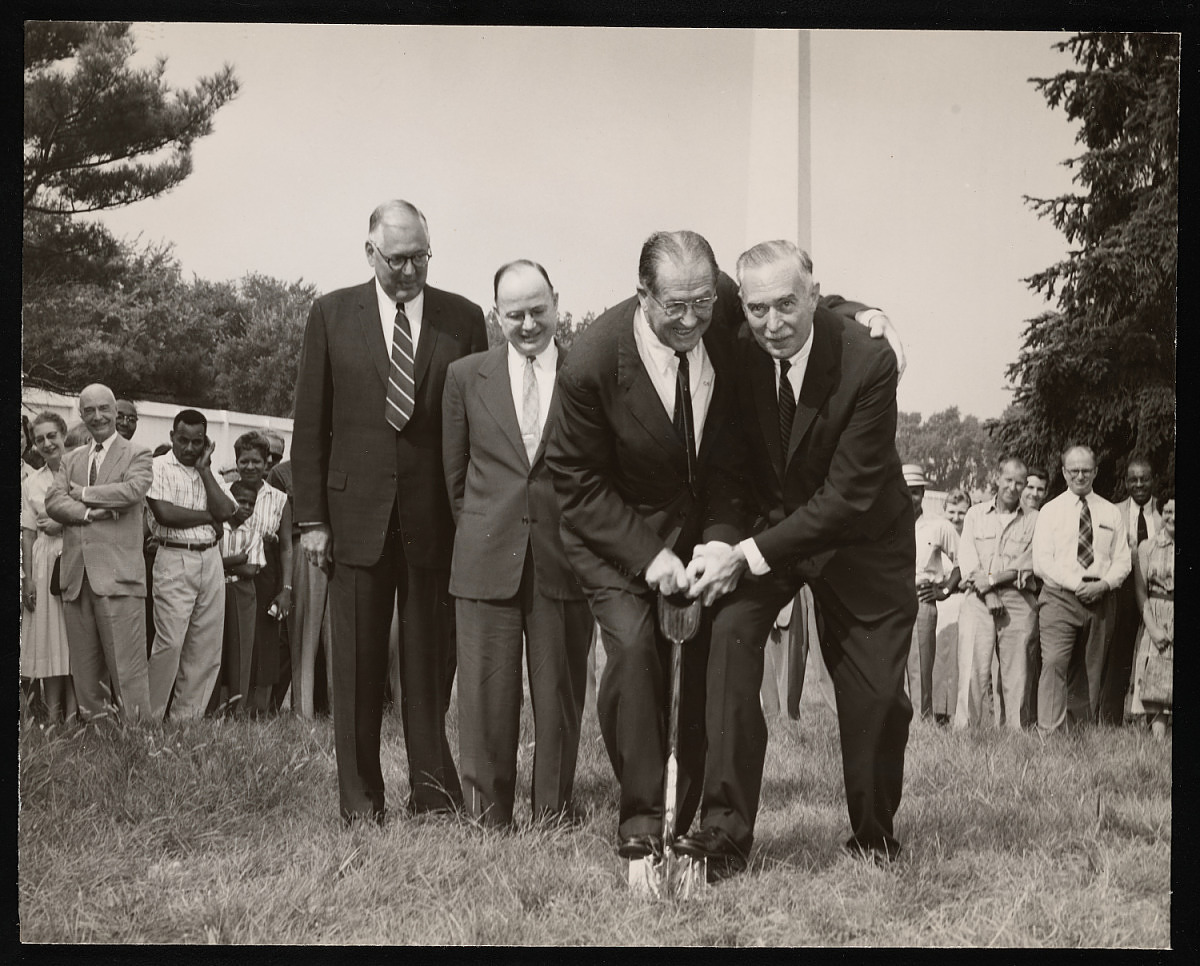In 1953, the Smithsonian Institution’s seventh Secretary was sworn into office. Dr. Leonard Carmichael, a psychologist, served from 1953–1964 and was the first Secretary to be hired from outside of the Institution.

Some historians regard Carmichael as the Secretary responsible for leading the Smithsonian into the modern age, raising funds to modernize outdated exhibitions and personally interviewing and hiring a group of young, talented researchers. During his time as Secretary, the Smithsonian created the National Portrait Gallery, expanded the Natural History Building, and updated and moved the Smithsonian Astrophysical Observatory to Cambridge, Massachusetts, where the observatory was the only laboratory in the United States able to track the Soviet’s Sputnik satellite in 1957. Additionally, Carmichael pushed to update and improve the National Zoological Park, and the Friends of the National Zoo was created to aid in the future of the Zoo during his time as Secretary.

Leaning on his experience in higher education, Carmichael was able to increase funding to pursue changes necessary to propel the Smithsonian into the future and attract larger audiences from around the world.
Below is a list of some of the acquisitions and dedications that occurred during Secretary Carmichael’s tenure.
- One of the Institution’s most famous acquisitions, the Hope Diamond, was donated to the Smithsonian by Harry Winston. The stone was insured and shipped through the United States Postal Service in 1958.

- The Jubilee Diamond was presented to the National Museum of Natural History in 1961 as an eight-month loan from Paul-Louis Weiller, an industrialist and philanthropist.

- The Museum of History and Technology, now known as the National Museum of American History, was dedicated on January 24, 1964.
- Josef and Sonia Fénykövi donated Henry, the African elephant on display in the rotunda of the National Museum of Natural History, on March 6, 1959.

- The Mercury Friendship 7 spacecraft, piloted by John Glenn, was was presented at the Arts and Industries Building at the Smithsonian as donation to the National Air Museum. Aboard the spacecraft, Glenn became the first American to safely return from orbiting the Earth in 1962.
Related Resources
- “Collections in Context,” by Mitch Toda, The Bigger Picture, Smithsonian Institution Archives
- “Leonard Carmichael: A Biographical Memoir,” by Carl Pfaffmann, National Academy of Sciences
- “Leonard Carmichael, 1898-1973,” Smithsonian Institution Archives
- “The Hope Diamond,” by Lawrence M. Small, Smithsonian Magazine
Produced by the Smithsonian Institution Archives. For copyright questions, please see the Terms of Use.

Leave a Comment